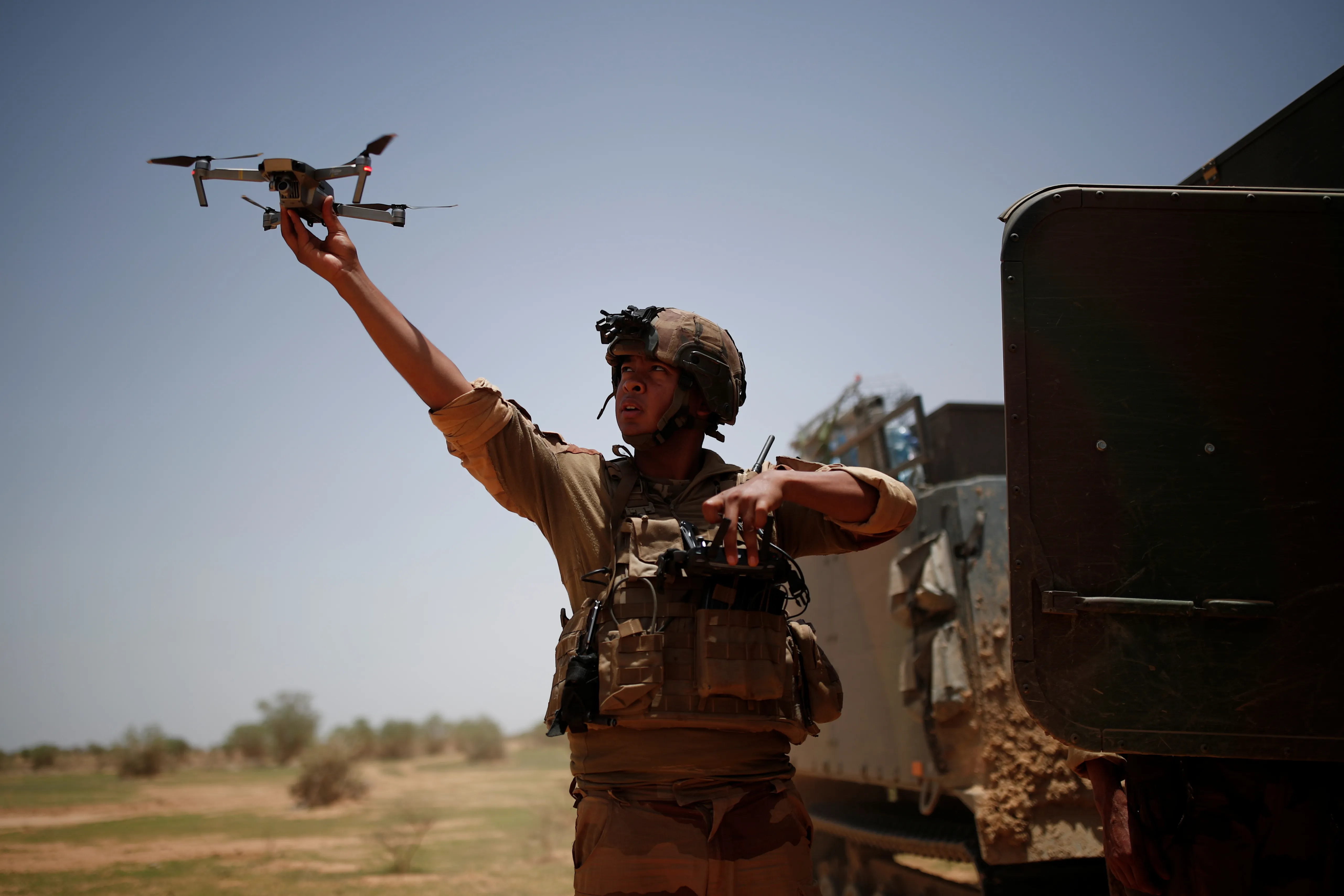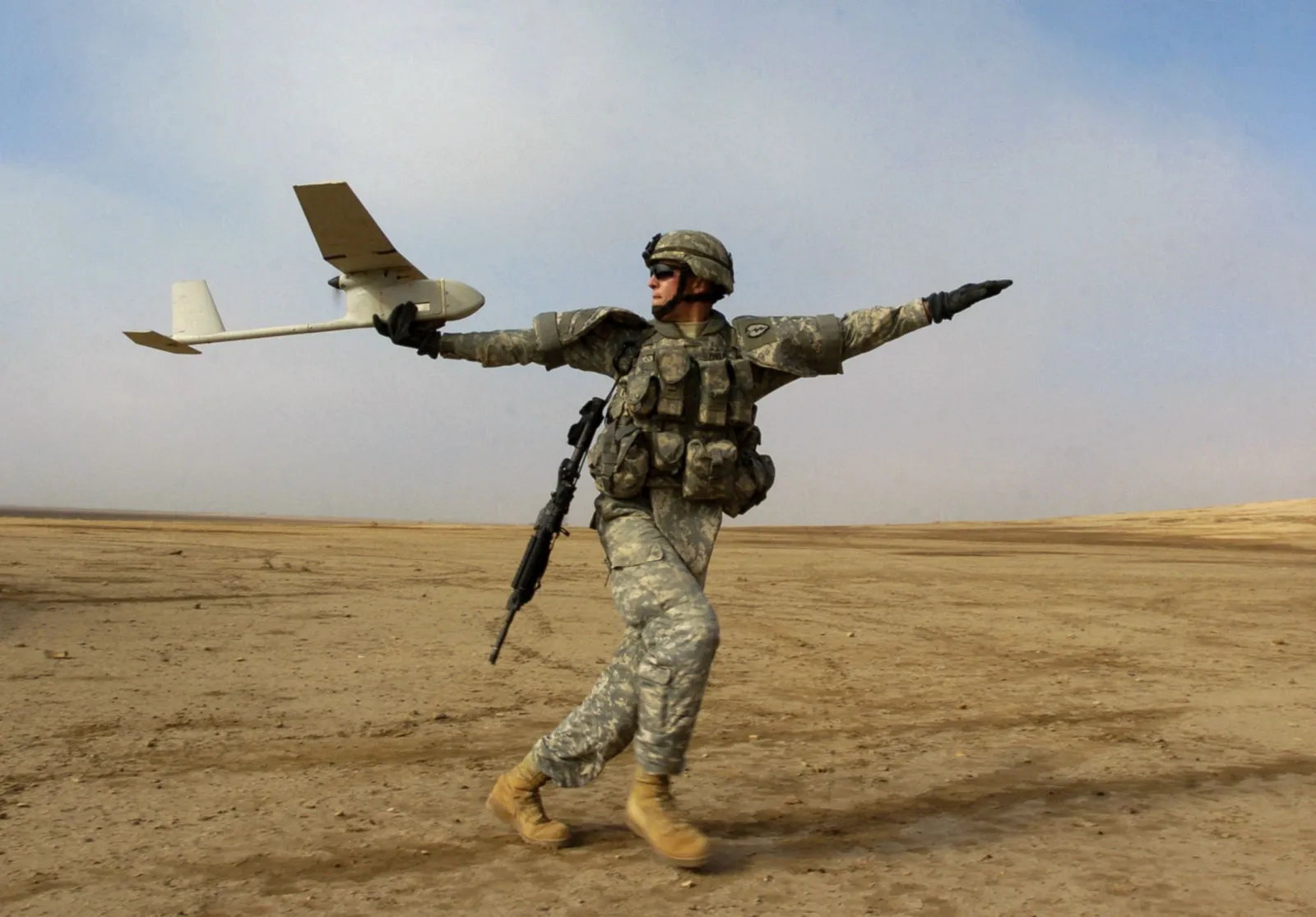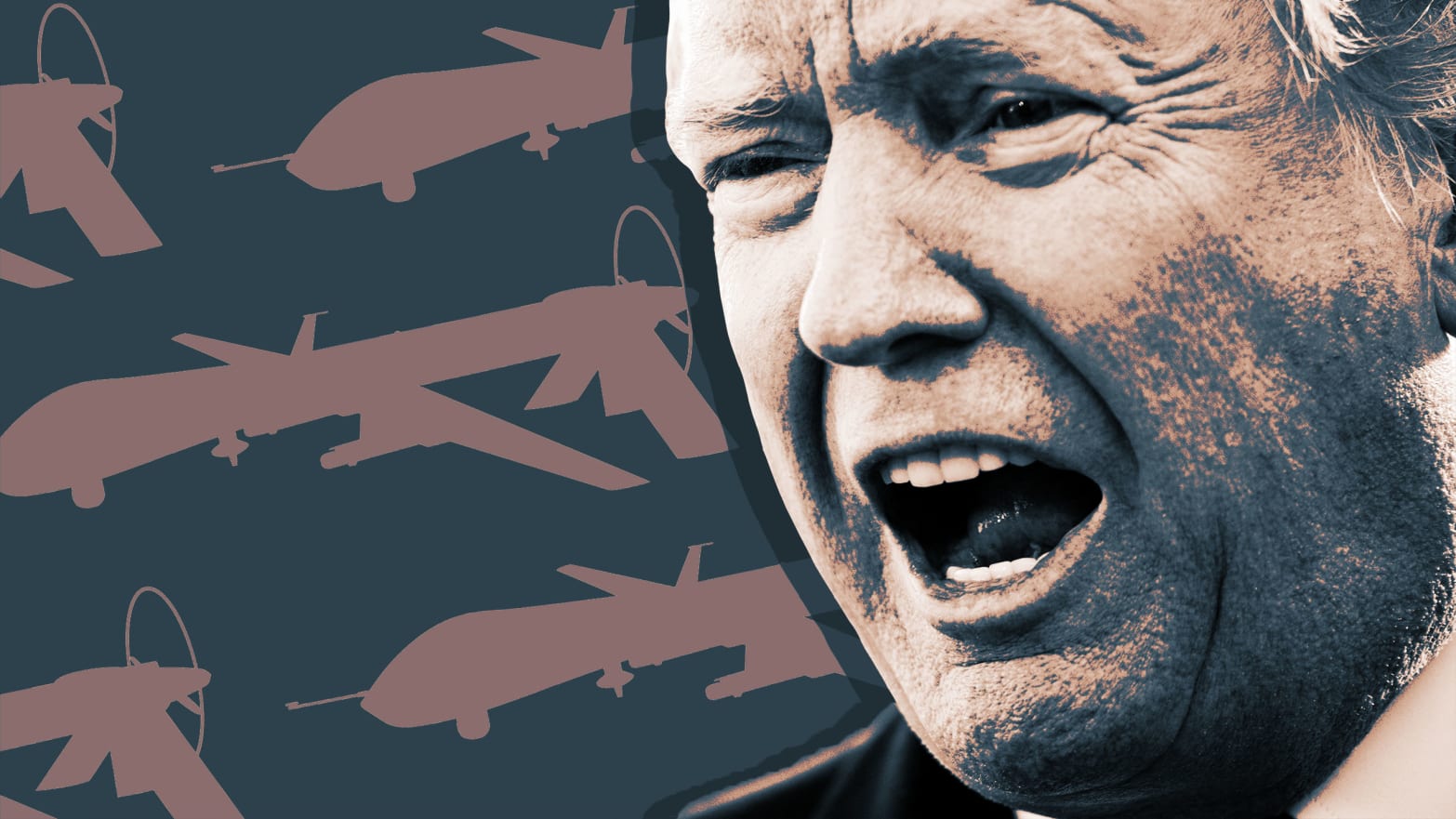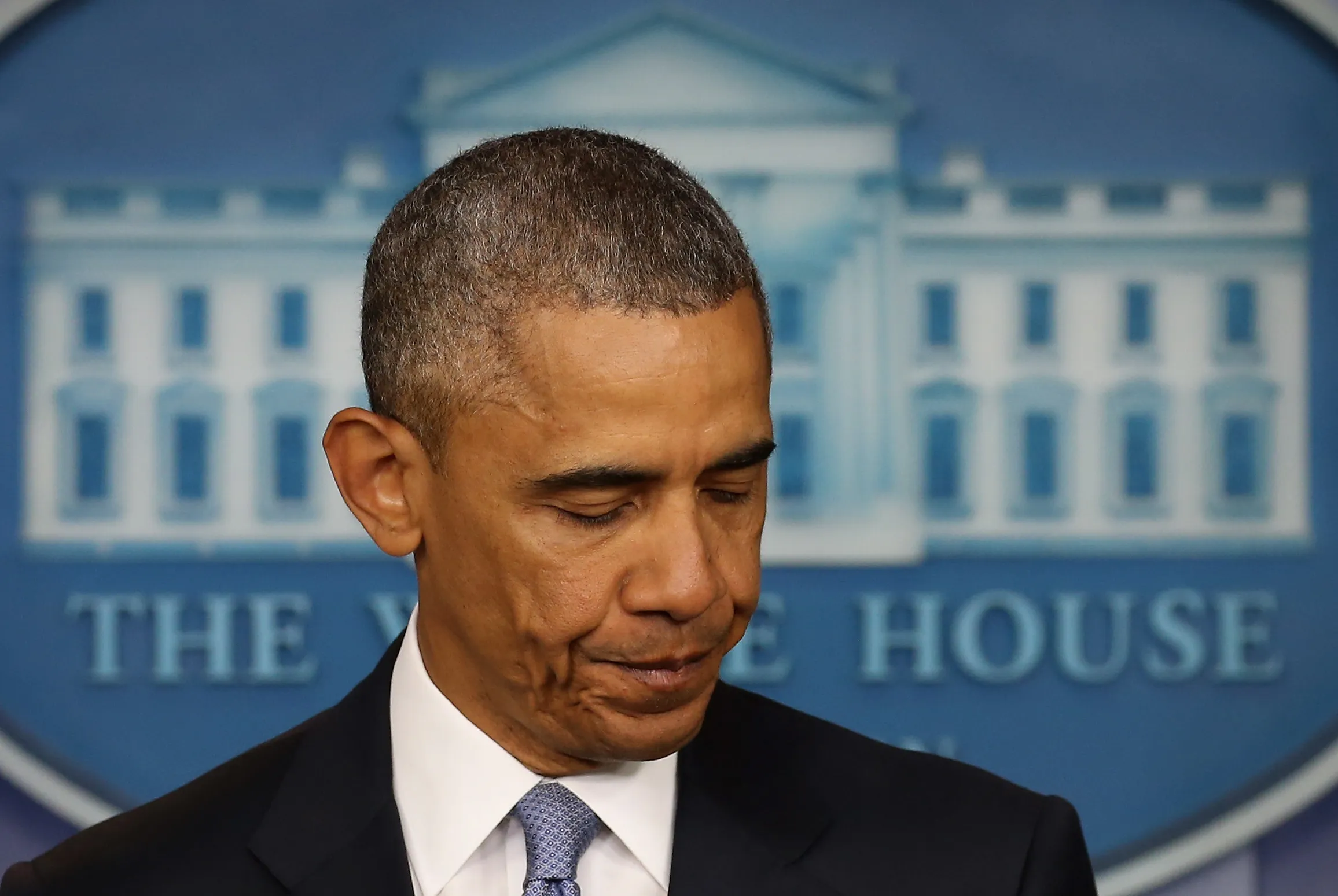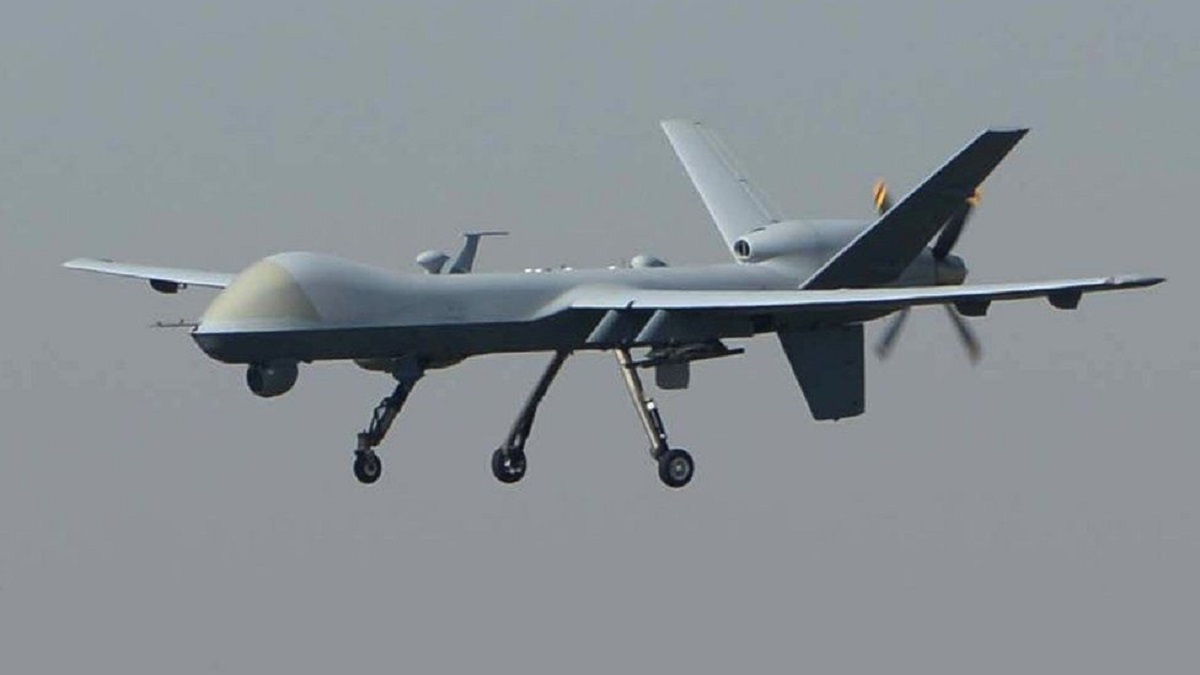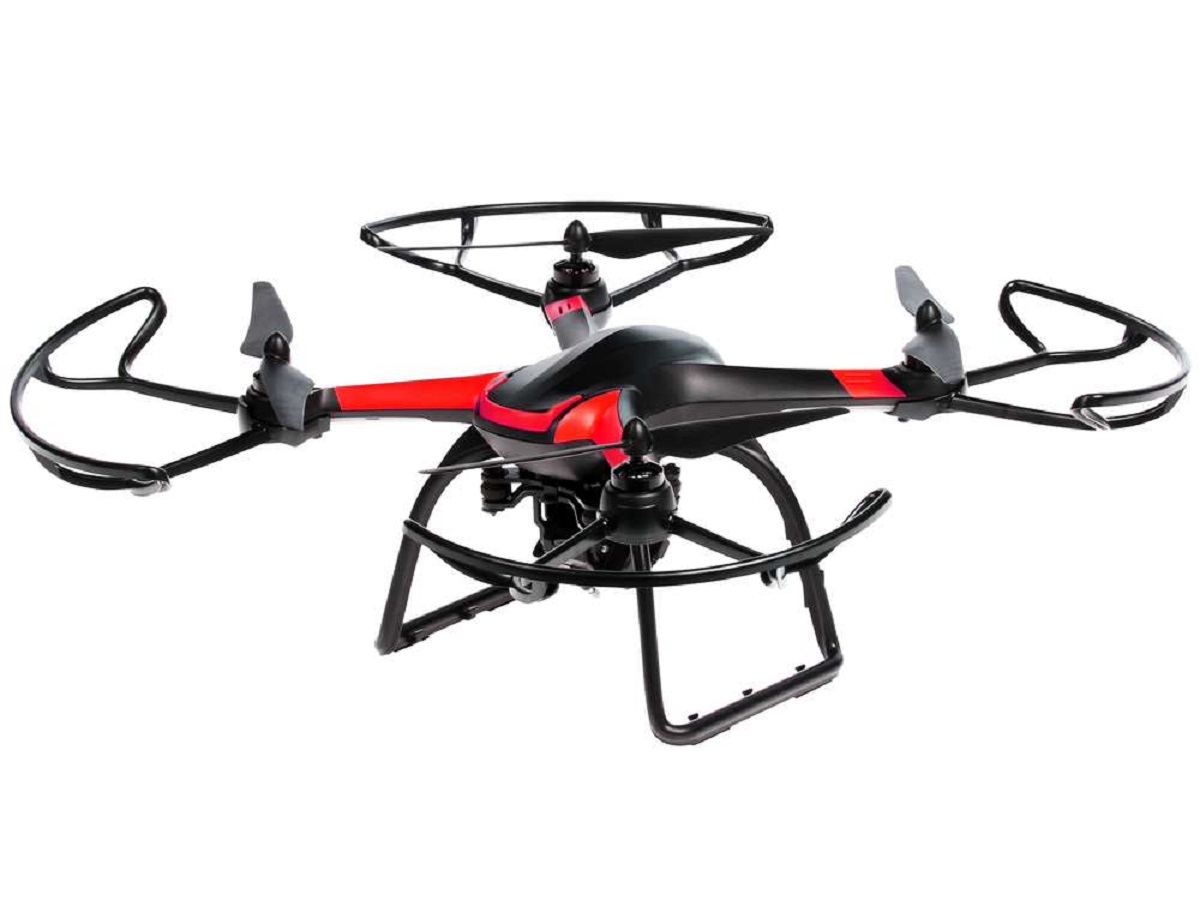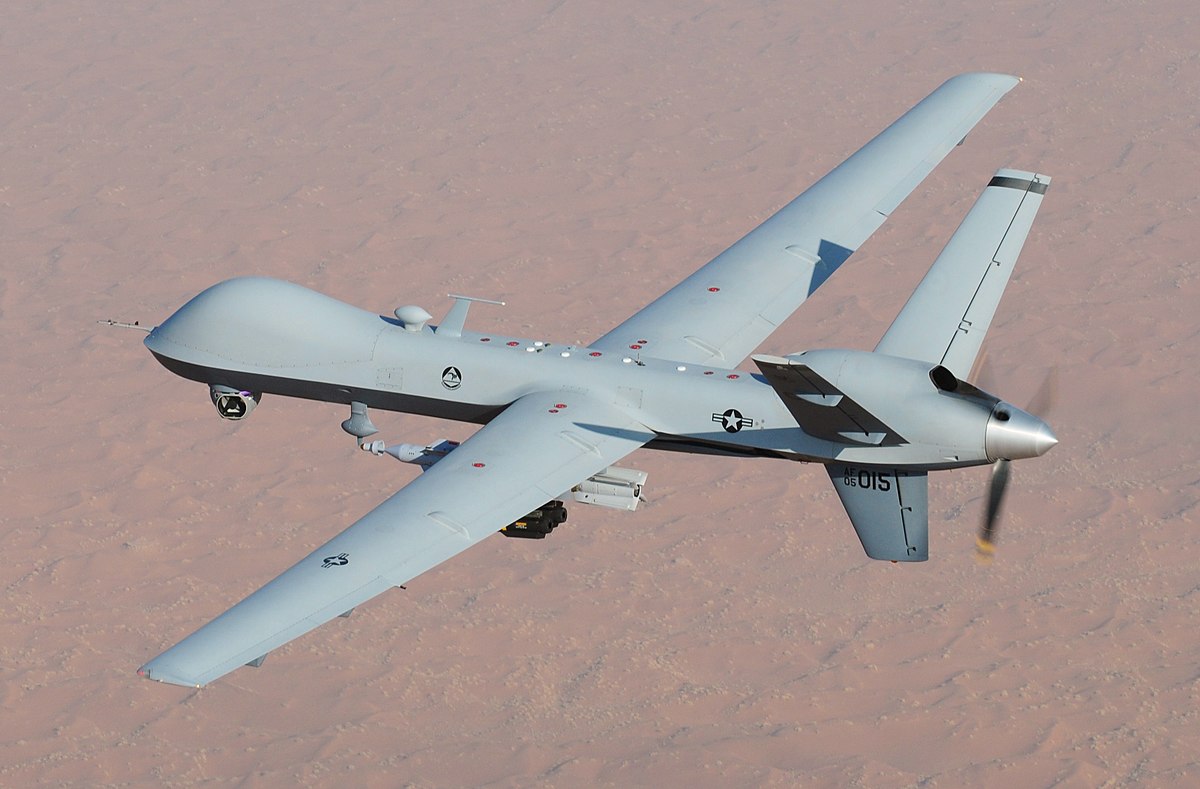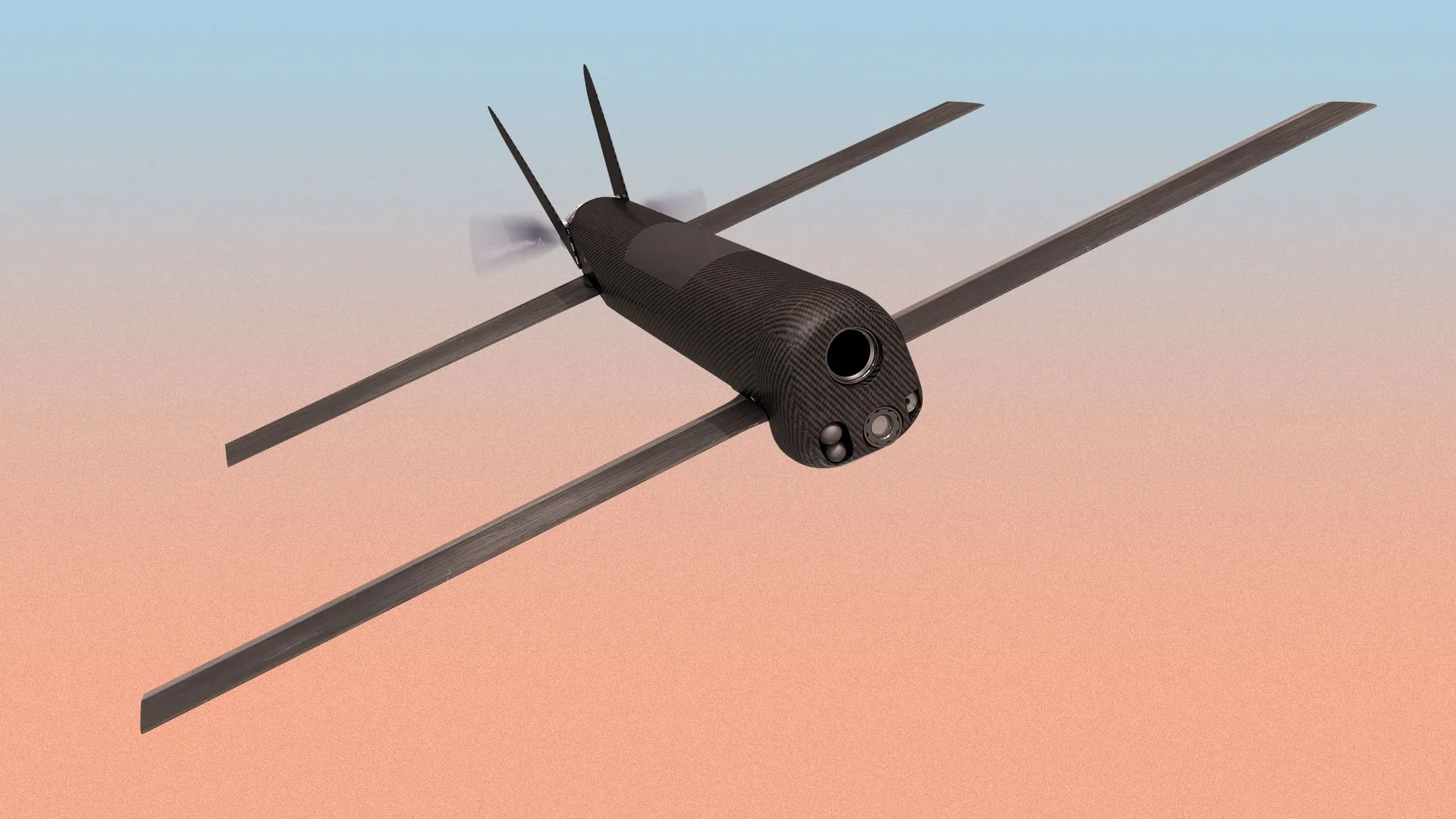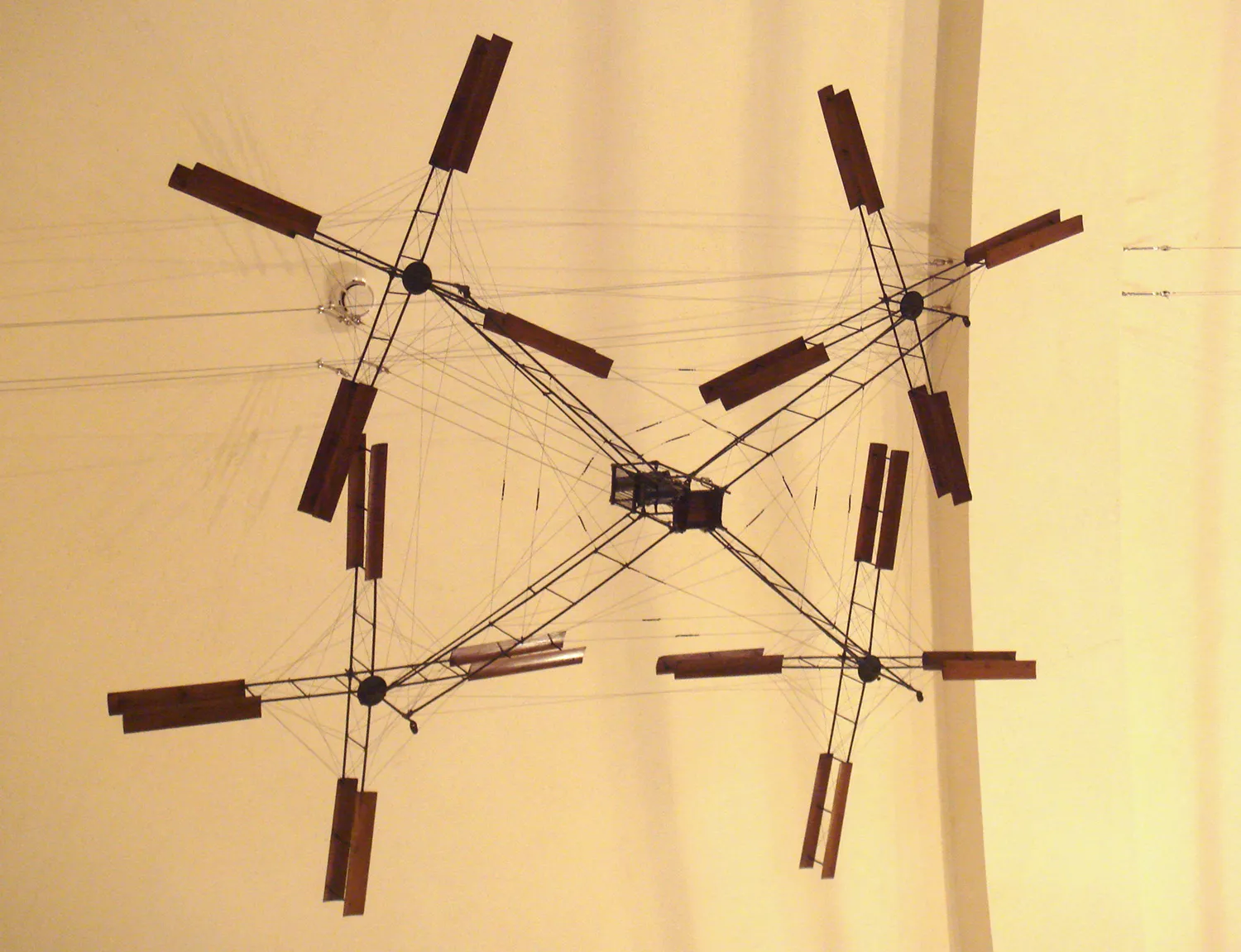Introduction
The use of drones has revolutionized modern warfare and become a controversial topic in global affairs. Drone strikes, also known as targeted killings, involve the use of unmanned aerial vehicles to launch precision attacks on specific targets. These strikes are often carried out by militaries or intelligence agencies to eliminate high-value targets or disrupt enemy activities.
Drone strikes have gained significant attention due to their effectiveness in targeting terrorists and their potential to reduce military casualties. However, they have also faced criticism for their impact on civilian populations, potential legal and ethical implications, and violation of sovereignty.
In this article, we will delve into the world of drone strikes, exploring their history, operational mechanisms, advantages, disadvantages, controversies, and legal considerations. We will also analyze the impact of drone strikes on civilian populations and discuss the future implications of this technology.
Despite the diverse opinions surrounding drone strikes, it is essential to have a comprehensive understanding of their role in modern warfare and their implications for international relations. By examining this multifaceted issue, we can engage in informed discussions and shape future policies regarding the use of drones in conflict zones.
What are Drone Strikes?
Drone strikes refer to the targeted use of unmanned aerial vehicles (UAVs), commonly known as drones, to carry out precision attacks on specific targets. These strikes are often conducted for military or counterterrorism purposes and have become a significant tool in modern warfare.
Drones are remotely operated aircraft that can be controlled from a remote location, allowing operators to conduct surveillance and launch attacks without direct human presence. These vehicles are equipped with advanced technology, such as high-resolution cameras, sensors, and precision-guided munitions, enabling them to carry out highly accurate strikes.
Drone strikes are typically carried out in areas of conflict or in regions where the presence of high-value targets, such as terrorist leaders or enemy combatants, has been identified. They offer several advantages over traditional aerial attacks or ground operations.
Firstly, drones provide real-time intelligence gathering capabilities, allowing operators to assess the situation and identify potential targets with greater accuracy. This reduces the risk of collateral damage and minimizes the loss of innocent lives. Additionally, the ability to launch strikes remotely reduces the danger faced by military personnel, as they are not physically present in the conflict zone.
Furthermore, drone strikes offer a level of precision that traditional airstrikes may struggle to achieve. Through the use of advanced targeting systems and guided munitions, drones can accurately hit specific targets, reducing the likelihood of unintended consequences and minimizing the destruction of infrastructure.
It is important to note that drone strikes are not limited to conventional warfare. They are also utilized in counterterrorism efforts, targeting high-value individuals who pose a significant threat to national security. By neutralizing these targets, drone strikes aim to disrupt terrorist networks and prevent future attacks.
However, despite the advantages that drones present, there are also concerns and criticisms associated with their use. These include the potential for civilian casualties, violation of sovereignty, and ethical implications. We will explore these aspects further in the following sections.
History of Drone Strikes
The origins of drone strikes can be traced back to the early 20th century when the concept of unmanned aerial vehicles was first explored. However, it was not until the late 20th century that drone technology advanced sufficiently to enable practical military use.
The United States has been at the forefront of drone development and deployment. The CIA initiated some of the earliest instances of drone strikes in the 1990s, primarily for reconnaissance purposes. It was during the post-9/11 era, however, that the use of drones for targeted killings gained prominence.
In 2001, the U.S. launched its first armed drone strike in Afghanistan, targeting a Taliban leader. This marked a significant shift in the use of drones from purely surveillance operations to lethal strikes. Subsequently, the U.S. intensified its drone campaign in the region, targeting high-value members of militant organizations, such as Al-Qaeda and the Taliban.
The effectiveness of drone strikes in eliminating key figures associated with terrorism became evident, leading to the expansion of U.S. drone programs. The use of drones expanded beyond Afghanistan, with strikes carried out in Pakistan, Yemen, Somalia, and other regions with known terrorist activity.
Over time, other countries, including the United Kingdom, Israel, and Iran, developed their own drone programs, utilizing drones for surveillance and military purposes. The use of armed drones by these countries has also generated controversy and debates about their legality and ethical implications.
One of the milestones in the history of drone strikes was the targeted killing of Anwar al-Awlaki, an American-born Al-Qaeda leader, in Yemen in 2011. This incident raised questions about the legal authority and accountability in carrying out drone strikes against individuals who are U.S. citizens.
The history of drone strikes also includes instances where these attacks have resulted in unintended civilian casualties. These incidents have sparked international outcry and calls for greater transparency and accountability in the use of drones.
Overall, the history of drone strikes is characterized by a rapid development and increasing reliance on unmanned aerial vehicles for military operations. While initially focused on targeting high-value individuals associated with terrorism, the use of drones has extended to other military objectives as well.
How do Drone Strikes Work?
Drone strikes involve a complex set of processes and technologies that enable the successful execution of targeted attacks. Understanding how these strikes work requires an examination of the various components involved.
The first step in conducting a drone strike is intelligence gathering. Surveillance drones are deployed to collect real-time information about potential targets. These drones are equipped with advanced cameras and sensors that provide high-resolution imagery and data. The intelligence gathered helps identify targets and assess the situation on the ground.
Once a target has been identified, the information is relayed to the command and control center where operators remotely pilot the armed drones. The drones used in these strikes are equipped with precision-guided munitions, such as Hellfire missiles or laser-guided bombs, capable of accurately hitting specific targets.
The operator remotely pilots the drone from a location often thousands of miles away from the target area. They rely on a combination of satellite communication, advanced sensor systems, and GPS technology to control the drone’s movements and monitor the target. This allows strikes to be conducted with a high degree of accuracy.
Before initiating a strike, the operator must follow a strict targeting process. This involves confirming the identity and location of the target, assessing the potential risks of collateral damage, and obtaining necessary approvals from higher authorities, such as military commanders or intelligence agencies.
Once all the necessary information has been gathered and verified, the operator determines the optimal time and conditions for the strike. The drone is then armed with the appropriate munition and guided towards the target area.
During the strike, the operator closely monitors the target using real-time video footage and other data transmitted by the drone. They can make adjustments to ensure the accuracy of the strike and minimize the risk to civilians or infrastructure.
After the strike, post-strike assessments are conducted to evaluate the effectiveness of the operation and gather additional intelligence. These assessments help determine the impact of the strike, potential casualties, and the overall success of the mission.
It is important to note that drone strikes are not a fully automated process. They require skilled and trained operators who make critical decisions based on intelligence, situational awareness, and legal and ethical considerations.
In recent years, there have been advancements in drone technology, such as the use of artificial intelligence and autonomous capabilities. However, the majority of drone strikes still rely on human oversight and decision-making.
Overall, drone strikes involve a combination of advanced technology, intelligence gathering, and skilled human operators. The precision and effectiveness of these strikes make them a powerful tool in modern warfare, but they also raise important ethical and legal questions that need to be addressed.
Advantages of Drone Strikes
Drone strikes have become an integral part of modern warfare, providing several advantages over traditional military operations. These advantages have contributed to the widespread use and reliance on drones by many countries. Let’s explore some of the key benefits of drone strikes.
1. Precision and Accuracy: Drones are equipped with advanced targeting systems and precision-guided munitions, enabling them to accurately hit specific targets. This precision minimizes collateral damage and reduces the risk of civilian casualties compared to traditional airstrikes or ground operations.
2. Reduced Risk to Military Personnel: By utilizing drones, military forces can carry out operations remotely, reducing the risk and potential harm to personnel. Operators can control the drones from secure locations, mitigating the dangers associated with direct combat.
3. Real-time Intelligence Gathering: Drones provide real-time surveillance capabilities, feeding operators with valuable intelligence about the target area. This information allows for informed decision-making and increases situational awareness, enhancing the effectiveness of strikes.
4. Extended Surveillance Duration: Drones can loiter in the airspace for extended periods, providing continuous surveillance of an area. This allows for prolonged monitoring of targets and the ability to assess the situation before initiating a strike.
5. Flexibility and Responsiveness: Drones offer flexibility in terms of deployment, as they can be rapidly deployed to various locations. In dynamic conflict situations, this agility allows for quick responses to emerging threats and target opportunities.
6. Cost-effective: Compared to traditional aircraft, drones have a lower operational cost. They require fewer resources and can conduct multiple missions without the need for extensive maintenance or crew rotation. This cost-effectiveness makes them an attractive option for military forces.
7. Denial of Safe Havens: Drones are effective in targeting and disrupting enemy activities in remote or hard-to-reach areas. By denying safe havens to adversaries, drones contribute to maintaining security and hindering their ability to plan or execute attacks.
It is important to note that while these advantages are significant, they should be weighed against the potential disadvantages and ethical considerations associated with drone strikes. Striking a balance between military effectiveness and minimizing harm to civilians remains a crucial challenge in the use of this technology.
Disadvantages of Drone Strikes
Although drone strikes offer several advantages, they also come with significant disadvantages and raise important ethical and legal concerns. It is crucial to consider these drawbacks when evaluating the use of drones in military operations. Let’s explore some of the key disadvantages of drone strikes.
1. Civilian Casualties: One of the primary concerns with drone strikes is the potential for civilian casualties. Despite their precision, there is still a risk of unintended harm to innocent civilians, particularly when operating in densely populated areas. The lack of direct human oversight on the ground can lead to errors or misinterpretation of the situation.
2. Psychological and Societal Impact: The constant presence of drones in certain regions can significantly impact the psychological well-being of the local population. The fear and anxiety caused by the threat of strikes can create a hostile environment and strain community relations. This can further fuel anti-US or anti-Western sentiments.
3. Legal and Moral Implications: The use of drones raises questions about the legality and moral justifications of targeted killings. Some argue that drone strikes violate international law, particularly when conducted in countries without their consent or outside of active conflict zones. The decision to take human life through remote means without due process raises ethical concerns.
4. Violation of Sovereignty: Drone strikes carried out in foreign territories, often without the consent of the host nation, can be seen as a violation of sovereignty. This undermines diplomatic relationships and may lead to unintended political consequences.
5. Lack of Transparency: The covert nature of drone operations can make it challenging to obtain accurate information about the scope and impact of these strikes. The lack of transparency can hinder accountability and make it difficult to assess the proportionality and necessity of specific operations.
6. Drone Proliferation and Arms Race: The increasing use of drones by various countries has raised concerns regarding a global arms race in drone technology. The proliferation of drones can lead to an escalation of conflicts and potentially increase the likelihood of unmanned aerial attacks by non-state actors.
7. Strain on International Relations: The use of drone strikes by one country in the territory of another can strain bilateral or multilateral relationships. These operations can lead to accusations of aggression and hinder cooperation on broader security issues.
It is important to address these disadvantages and concerns through increased transparency, adherence to international legal frameworks, and robust intelligence gathering to minimize civilian casualties. Striking a balance between national security objectives and ethical considerations is crucial in shaping future policies on the use of drone strikes.
Controversies surrounding Drone Strikes
The use of drone strikes has generated significant controversy and sparked debates on various legal, ethical, and political fronts. These controversies arise from the nature of drone warfare and the potential implications of their operations. Let’s delve into some of the key controversies surrounding drone strikes.
1. Civilian Casualties: One of the most contentious issues surrounding drone strikes is the unintended harm inflicted on civilian populations. Despite advances in precision targeting, there are instances where strikes result in civilian casualties. This raises concerns about the proportionality of these operations and the potential violation of international humanitarian law.
2. Accountability and Transparency: The covert nature of drone operations makes it challenging to obtain accurate information and ensure accountability. The lack of transparency surrounding target selection, decision-making processes, and post-strike assessments can hinder efforts to hold responsible parties accountable for any wrongful actions.
3. Targeted Killings and Due Process: The practice of targeted killings through drone strikes raises questions about the right to due process and the legality of extrajudicial executions. Critics argue that drone strikes bypass legal procedures and deny individuals the opportunity to defend themselves or face trial.
4. Violation of Sovereignty: Drone strikes conducted in foreign territories without the consent of the host nation raise concerns about the violation of sovereignty. These operations can strain diplomatic relationships, infringe on the territorial integrity of nations, and potentially ignite political tensions.
5. Effects on Public Opinion: The presence of drones in conflict zones can generate significant resentment and anti-US sentiment among local populations. The constant surveillance and fear of strikes create a climate of hostility, potentially undermining long-term stability and counterinsurgency efforts.
6. Psychological and Societal Impacts: The prolonged use of drones can have psychological and societal impacts on affected communities. The constant presence of unmanned aerial vehicles can instill fear, anxiety, and a sense of insecurity. This can lead to social disruption, strained community relationships, and increased radicalization.
7. Arms Race and Non-State Actors: The widespread use of drone technology by various countries raises concerns about an arms race in remote warfare. The availability of drones also poses risks, as non-state actors, including terrorist organizations, could potentially acquire and utilize these unmanned vehicles for their own deadly purposes.
Addressing these controversies requires a comprehensive examination of legal frameworks, adherence to international humanitarian law, and increased transparency and accountability in drone operations. Striking a balance between national security interests and ethical considerations is essential in minimizing harm to civilians and maintaining international peace and stability.
International Laws and Regulations Related to Drone Strikes
The use of drones in military operations has raised important legal and regulatory questions, pertaining to both international humanitarian law and national sovereignty. While there is no specific international treaty governing the use of drones, existing laws and principles provide a framework for assessing the legality and legitimacy of drone strikes. Let’s explore some of the key international laws and regulations related to drone strikes.
1. International Humanitarian Law: Drone strikes, like any other military operations, are subject to the principles of international humanitarian law, often referred to as the laws of armed conflict or laws of war. These principles include distinguishing between combatants and civilians, proportionality in the use of force, and the prohibition of targeting non-military objects.
2. Right to Self-Defense: Under the United Nations Charter, countries have the inherent right to self-defense. This applies to the use of force against non-state actors when there is an imminent threat of armed attack. However, any use of force must be necessary and proportionate to the nature of the threat.
3. Principle of Sovereignty: The principle of sovereignty enshrined in international law prohibits the use of force by one state on the territory of another without the consent of the host nation, except in cases of self-defense or UN Security Council authorization.
4. Prohibition of Extrajudicial Killings: International law prohibits extrajudicial killings, emphasizing the right to life and the necessity for fair and impartial legal processes. The targeted killing of individuals without due process raises concerns about the legality and ethical justifications of drone strikes.
5. Lawful Targeting: The principle of distinction requires parties to an armed conflict to target only combatants and military objectives. Indiscriminate attacks or attacks intentionally targeting civilians or civilian objects are prohibited under international law, including customary international humanitarian law.
6. International Human Rights Law: Drone strikes can also implicate international human rights law, particularly when they occur outside of armed conflict situations. The right to life, privacy, and freedom from arbitrary detention and torture are fundamental rights protected by international human rights instruments.
While existing international laws provide a foundation for evaluating the legality of drone strikes, challenges persist in their application and interpretation. The evolving nature of armed conflicts and technological advancements necessitate ongoing discussions and adaptations to ensure compliance with legal frameworks and ethical standards.
It is important for countries to engage in dialogue, exchange best practices, and work towards developing a comprehensive framework addressing the complexities and challenges associated with the use of drones in military operations.
Countries Using Drone Strikes
The use of drone strikes as a military tactic is not limited to a single country. Various nations have incorporated drones into their military arsenals and employ them for a range of purposes, including surveillance, reconnaissance, and targeted strikes. Let’s take a look at some of the countries known to use drone strikes.
1. United States: The United States has been at the forefront of drone development and deployment. It has extensively employed armed drones, particularly in regions such as Afghanistan, Pakistan, Yemen, and Somalia, to target high-value individuals associated with terrorist organizations.
2. United Kingdom: The United Kingdom also utilizes armed drones for military operations. They have been deployed in conflicts such as Afghanistan and have been used in targeted strikes against individuals involved in plotting or executing terrorist activities.
3. Israel: Israel has employed drones for surveillance, intelligence gathering, and targeted strikes in various conflicts. They have been used primarily to monitor and disrupt the activities of militant groups operating near its borders.
4. Iran: Iran has developed its own drone technology and has employed drones for surveillance and reconnaissance purposes. They have been deployed in the region, including for monitoring activities in the Persian Gulf and the Strait of Hormuz.
5. Turkey: Turkey has utilized armed drones, such as the Bayraktar TB2, in military operations against militant groups, including the Kurdistan Workers’ Party (PKK) in the mountainous regions of southeastern Turkey and northern Iraq.
6. China: China has been rapidly developing its drone capabilities and has deployed unmanned aerial vehicles for reconnaissance and surveillance purposes. China’s drone technology is also being marketed and exported to other countries.
7. Pakistan: While the United States has carried out numerous drone strikes on Pakistani soil, Pakistan itself has also utilized its own drones for surveillance and reconnaissance purposes, particularly in conflict-stricken areas such as the Federally Administered Tribal Areas (FATA) and Balochistan.
Other countries, such as Russia, Saudi Arabia, Nigeria, and Iraq, have also embraced drone technology to varying degrees for military purposes.
It’s important to note that the use of drone strikes by these countries has elicited both support and criticism, with concerns raised about adherence to international laws, the potential for civilian casualties, and diplomatic implications. The proliferation of drones and their use by various countries underscores the need for further discussions and regulations regarding their deployment and the ethical considerations surrounding their use in armed conflicts.
Impact of Drone Strikes on Civilian Populations
The impact of drone strikes on civilian populations is a critical aspect of the ongoing debate surrounding their use. While drone strikes aim to target high-value individuals and minimize collateral damage, concerns persist regarding the unintended harm inflicted on innocent civilians. Let’s examine the impact of drone strikes on civilian populations.
1. Civilian Casualties: One of the primary concerns is the risk of civilian casualties. Despite the precision targeting of drones, there have been instances where strikes have resulted in unintended harm to non-combatants. This raises questions about the effectiveness of intelligence gathering and target identification processes.
2. Prolonged Psychological Impact: The constant presence of drones in conflict zones can have a profound psychological impact on civilian populations. The fear and anxiety caused by the threat of strikes can create a climate of insecurity and disruption in daily life. This can lead to chronic stress, trauma, and other mental health issues.
3. Displacement and Disruption: Drone strikes often occur in regions already affected by conflict or instability. The resulting destruction, fear, and displacement can uproot communities, creating significant social and economic challenges. The disruption of essential services, such as healthcare and education, further compounds the suffering of civilian populations.
4. Undermining Trust and Cooperation: The use of drone strikes in civilian areas can erode trust between local populations and external forces. The loss of innocent lives can lead to increased resentment and hostility towards those conducting the strikes, hindering efforts to build community relationships and garner support.
5. Damage to Infrastructure: Drone strikes can cause significant damage to infrastructure such as schools, hospitals, and residential areas. This not only leads to the loss of essential services but also hampers long-term recovery and reconstruction efforts in conflict-affected regions.
6. Radicalization and Recruitment: The unintended harm caused by drone strikes can serve as a potent recruitment tool for terrorist organizations. The anger and grievances resulting from civilian casualties may push individuals towards radicalization, perpetuating a cycle of violence and posing long-term security threats.
7. Challenges in Post-Strike Assistance: Addressing the needs of civilian populations affected by drone strikes can be challenging. The remote nature of these strikes and limited access make it difficult to provide timely humanitarian assistance, impacting the lives and well-being of those affected.
Mitigating the impact of drone strikes on civilian populations necessitates increased transparency, enhanced intelligence gathering, and adherence to international humanitarian law. Efforts should focus on minimizing the risk of civilian casualties, providing long-term support for affected communities, and ensuring accountability and compensation for wrongful harm caused by drone strikes.
Future of Drone Strikes
The future of drone strikes is shaped by evolving technologies, legal considerations, and public opinion. As unmanned aerial technology continues to advance, so does the potential for significant changes in the use and implications of drone strikes. Let’s explore some aspects that may shape the future of drone strikes.
1. Advancements in Technology: The development of drones with enhanced capabilities, such as longer flight durations, increased payload capacity, and improved artificial intelligence, may lead to more sophisticated and autonomous drone systems. This could impact the effectiveness and precision of drone strikes, as well as raise concerns about the ethical implications of unmanned systems making crucial targeting decisions.
2. Regulation and Legal Frameworks: The increasing use of drones by different countries will likely lead to the development of more robust international regulations and legal frameworks governing their use. The establishment of clearer guidelines and accountability mechanisms can help address concerns surrounding civilian casualties, sovereignty, and adherence to international law.
3. Public Perception and Opposition: The public’s perception of drone strikes will continue to influence policies and decision-making surrounding their use. Increased public awareness and scrutiny may lead to more demand for transparency, accountability, and adherence to ethical standards in the deployment of drones.
4. Enhanced Surveillance Capabilities: Drones’ surveillance capabilities are expected to advance, potentially leading to increased monitoring and intelligence gathering activities. This could raise concerns regarding privacy rights, data protection, and civil liberties.
5. Integration of Artificial Intelligence: The integration of artificial intelligence (AI) into drone systems could bring both benefits and challenges. AI-powered drones may be more efficient, adaptable, and capable of autonomous decision-making. However, concerns over the ethical use of AI in targeting and potential mistakes or biases in decision-making algorithms will need to be addressed.
6. Counter-Drone Technology: As drones become more prevalent, efforts to develop counter-drone technology will also increase. This includes systems aimed at detecting, tracking, and mitigating potential threats posed by unauthorized or hostile drones. The ongoing race between drone technology and counter-drone measures will shape the future landscape of drone strikes.
7. International Cooperation: International collaboration and efforts to establish norms and rules regarding the use of drones will play a crucial role in shaping their future. The sharing of best practices, intelligence, and responsible use of drones can help mitigate risks and ensure that their use aligns with international humanitarian and human rights standards.
The future of drone strikes will depend on a delicate balance between technological advancements, legal frameworks, ethical considerations, and international cooperation. Striking this balance will be essential in harnessing the positive potentials of drone technology while minimizing harm, ensuring accountability, and upholding international norms and values.
Conclusion
Drone strikes have revolutionized modern warfare, offering precision and remote capabilities that traditional military operations often lack. They have become a central tool in the fight against terrorism, providing valuable intelligence and targeting capabilities. However, the use of drone strikes is not without controversy and considerations.
While drone strikes offer advantages such as precision targeting and reduced risk to military personnel, they also present significant challenges. The potential for civilian casualties, violation of sovereignty, ethical concerns, and the impact on civilian populations raise important questions that need to be addressed.
International laws and regulations provide a framework for assessing the legality and legitimacy of drone strikes, but their application and interpretation remain complex. Efforts to strike a balance between national security objectives and ethical considerations are essential to ensure compliance with these international norms.
As technology advances, the future of drone strikes will continue to evolve. Advancements in artificial intelligence, surveillance capabilities, and counter-drone technology will shape how drones are utilized in the future, while public perception and regulatory frameworks will influence their ethical use.
It is crucial for countries to engage in open dialogues, international cooperation, and policy development to address the concerns surrounding drone strikes. Transparency, accountability, and adherence to international humanitarian and human rights law should be at the forefront of decision-making processes.
Ultimately, striking the balance between military effectiveness and minimizing harm to civilian populations is paramount. By critically evaluating the impact of drone strikes and actively working towards mitigating their negative consequences, we can navigate the future of this controversial and increasingly prevalent form of warfare.







